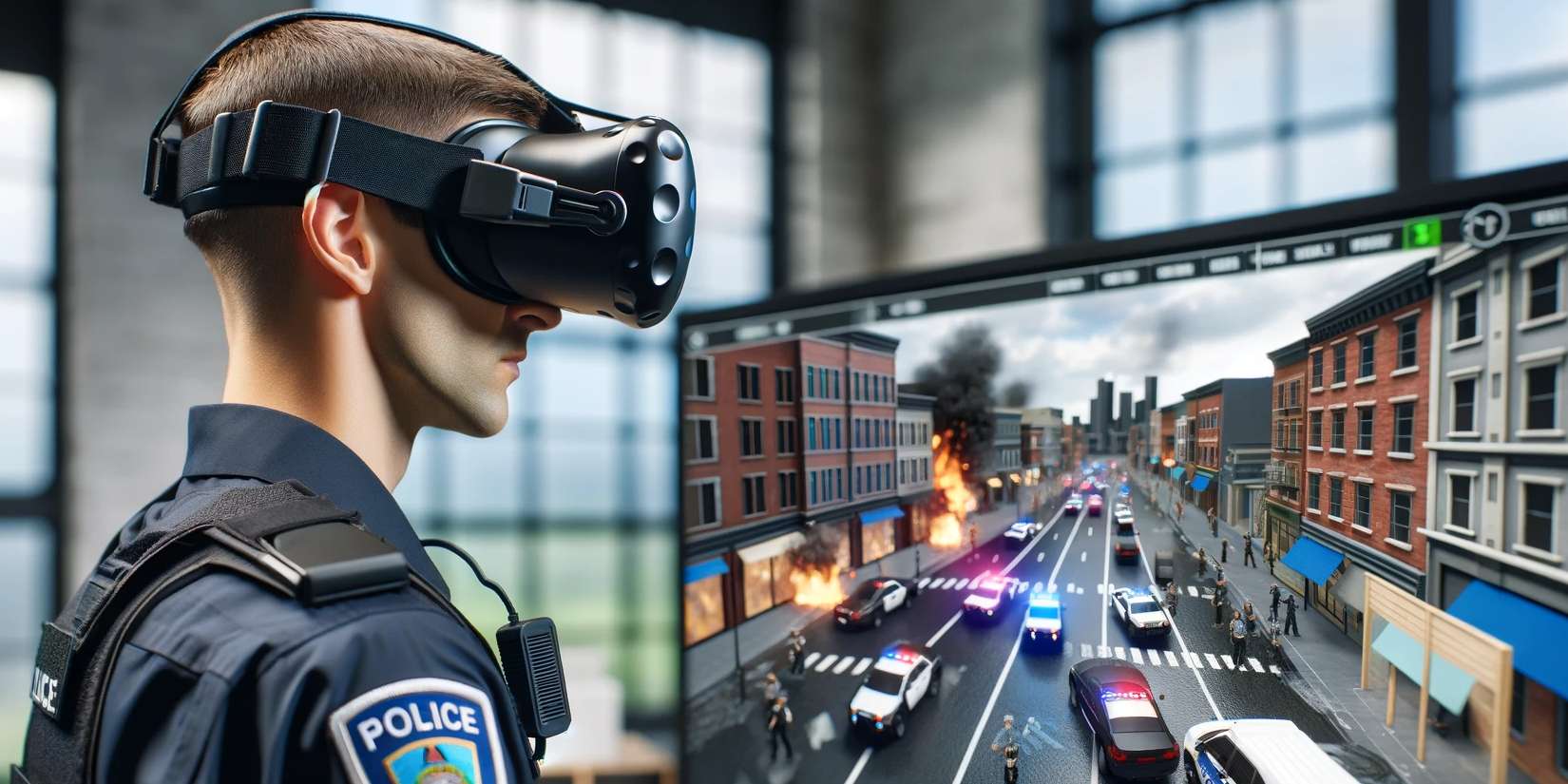In a world where technology is constantly advancing, police training is no stranger to innovation. Virtual reality training (VR) offers a revolutionary method of preparing police officers for real operations. But how effective is this training really, and what challenges does it present?
Advantages of VR training
VR training offers numerous advantages. It enables realistic, interactive scenarios in which police officers can be prepared for a wide range of situations – from traffic checks to high-risk operations. These simulation environments are not only safe, but also repeatable and variable, which enables intensive and targeted training. VR also makes it possible to analyze behavior and decision-making in stressful situations, which is often difficult to observe in real life.
Challenges and risks
Despite its advantages, VR training also brings challenges. The cost of purchasing and maintaining technical equipment can be high. The need to constantly update the software to ensure realistic scenarios is also a factor. There is also a risk that trainees will rely too much on the virtual world and possibly neglect important aspects of the real world as a result.
Top 5 use cases for VR training for the police
- De-escalation training: VR enables police officers to practise how to deal with dangerous situations in safe, controlled environments without using force. They can act out different scenarios, from domestic violence to public confrontations, and learn to use verbal and non-verbal de-escalation techniques effectively.
- Operational training for extreme situations: VR simulations can provide extremely realistic simulations of high-risk operational scenarios such as hostage-taking, terrorist attacks or rampages. In such scenarios, officers can train in a safe environment to make quick and accurate decisions under stress.
- Traffic checks and traffic surveillance: VR can be used to prepare police officers for various road traffic scenarios, including routine traffic checks, chases and accident responses. This helps them to react better to unexpected situations and ensure safety on the roads.
- Forensic and investigative skills: Through VR training, officers can learn how to investigate crime scenes, preserve evidence and apply forensic procedures. They can work in virtual environments that recreate real criminal cases to sharpen their analytical and deductive skills.
- Physical training and self-defense: VR also offers opportunities for physical training. Officers can practice self-defense techniques and hand-to-hand combat tactics in virtual environments without the risk of injury associated with traditional training methods.
Real application examples
Some police units around the world are already using VR training. In the USA, for example, police academies use VR systems to train de-escalation techniques. In Germany, VR is used to prepare emergency services for complex operational situations such as rampages. These real-life examples show that VR training can be an effective tool to better prepare police forces for the real world.
User Story
Imagine you are a young police trainee. VR training gives you the opportunity to experience critical and dangerous scenarios in a safe environment without taking any real risks. This not only strengthens your skills, but also your self-confidence when you are out in the field later on.
Conclusion
VR training in police training is a promising but also complex field. It offers a safe, effective and flexible training method, but it must be carefully implemented and always adapted to real-life conditions.
